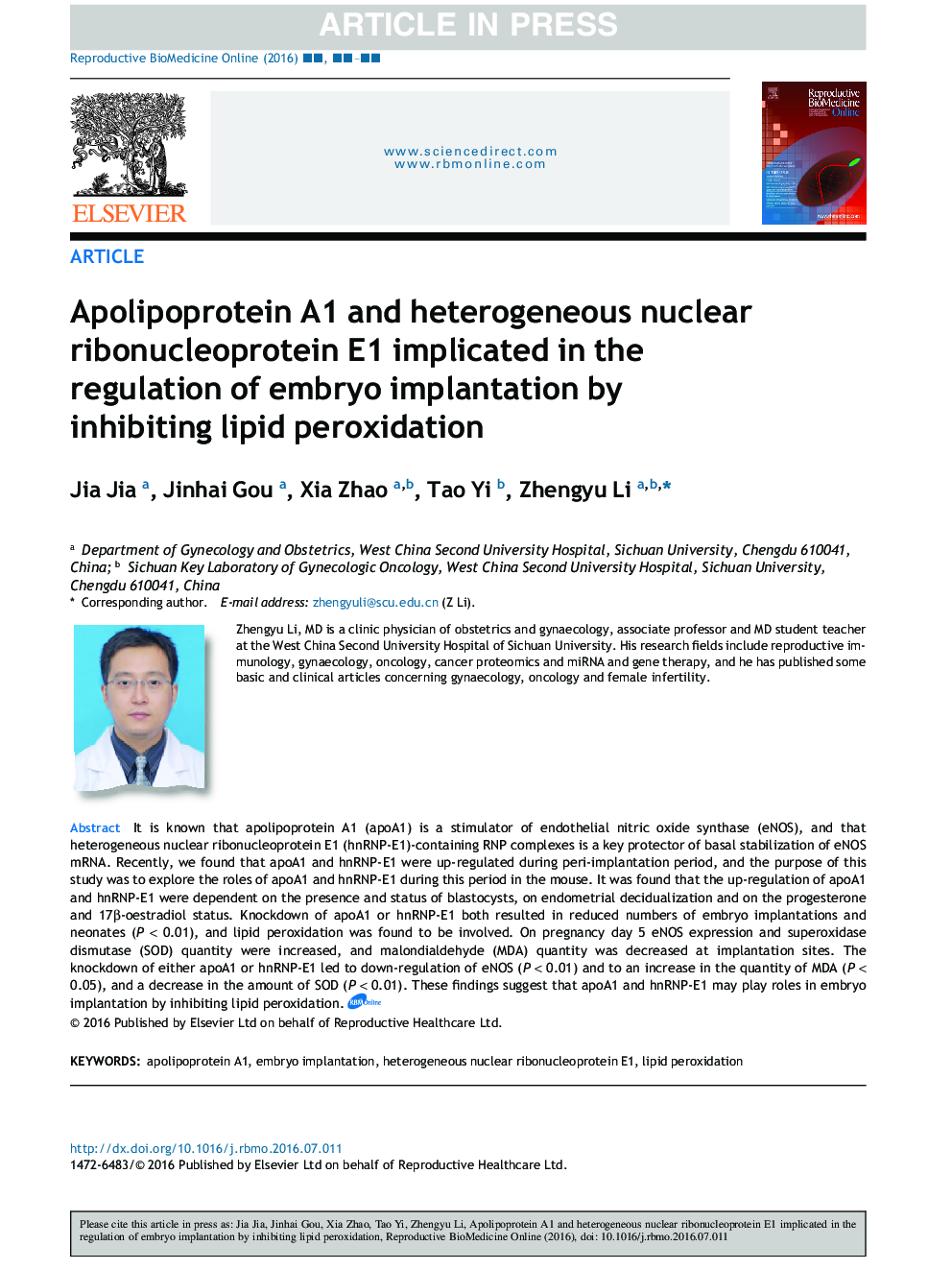| Article ID | Journal | Published Year | Pages | File Type |
|---|---|---|---|---|
| 5696652 | Reproductive BioMedicine Online | 2016 | 11 Pages |
Abstract
It is known that apolipoprotein A1 (apoA1) is a stimulator of endothelial nitric oxide synthase (eNOS), and that heterogeneous nuclear ribonucleoprotein E1 (hnRNP-E1)-containing RNP complexes is a key protector of basal stabilization of eNOS mRNA. Recently, we found that apoA1 and hnRNP-E1 were up-regulated during peri-implantation period, and the purpose of this study was to explore the roles of apoA1 and hnRNP-E1 during this period in the mouse. It was found that the up-regulation of apoA1 and hnRNP-E1 were dependent on the presence and status of blastocysts, on endometrial decidualization and on the progesterone and 17β-oestradiol status. Knockdown of apoA1 or hnRNP-E1 both resulted in reduced numbers of embryo implantations and neonates (P < 0.01), and lipid peroxidation was found to be involved. On pregnancy day 5 eNOS expression and superoxidase dismutase (SOD) quantity were increased, and malondialdehyde (MDA) quantity was decreased at implantation sites. The knockdown of either apoA1 or hnRNP-E1 led to down-regulation of eNOS (P < 0.01) and to an increase in the quantity of MDA (P < 0.05), and a decrease in the amount of SOD (P < 0.01). These findings suggest that apoA1 and hnRNP-E1 may play roles in embryo implantation by inhibiting lipid peroxidation.
Related Topics
Health Sciences
Medicine and Dentistry
Obstetrics, Gynecology and Women's Health
Authors
Jia Jia, Jinhai Gou, Xia Zhao, Tao Yi, Zhengyu Li,
